
Retail prices in Euro, including VAT:
AUVA 50 – 517 euro for 8 isolators
AUVA 70 – 990 euro for 8 isolators
AUVA 100 – 1.463 euro for 8 isolators
Review samples supplied by Stack Audio
Stack Audio
Vibrations exist in our systems, and those vibrations can distort the music we love. British manufacturer Stack Audio aims to bring music to life by focusing on vibration dissipation and isolation, leaving only the pure, undistorted music we want to hear. Their mission is to remove masking vibrations so that the audio equipment can reveal more detail, texture, and transparency.
Stack Audio has noticed that the performance and price of hi-fi equipment and accessories are often not directly related—minor improvements typically come with a disproportionate price tag. Since its incorporation in 2013, all Stack Audio products have been fully designed and assembled in-house in the UK. The company strives to develop products that outperform their price bracket yet are still constructed to the highest standards.
The company offers two kinds of Isolators: the AUVA EQ System Isolator (audio component footers) and the AUVA Speaker Isolator (speaker footers). For this review, I’ll focus on the Speaker Isolators.
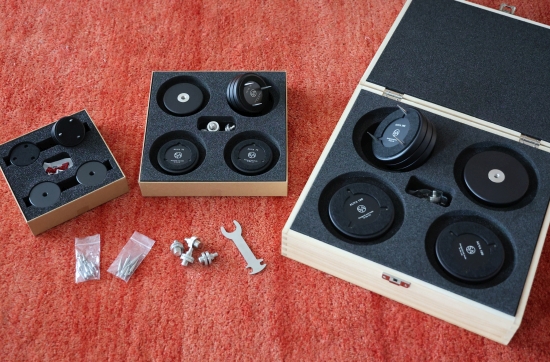
There are three Speaker Isolator versions to choose from – AUVA 50, 70, and 100. They attach via supplied threaded bolts into the existing mounting holes on the underside of loudspeakers or stand mounts. Different thread sizes are available to suit, and the AUVAs are provided either with carpet spikes or protective felt pads for use on solid floors.

All AUVA variants support speakers up to 275 Kg and can be used with both stand-mount and floor-standing loudspeakers. However, the vibration-absorbing performance depends on the version and size. The AUVA 50 contains 2 internal cells for effective vibration absorption. The AUVA 70 has 3 cells, and the 100 has 5. The AUVA 70 and 100 additionally include a central particle-filled chamber for extra absorption capability.
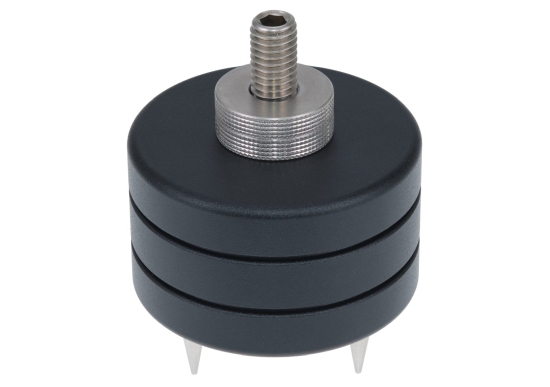
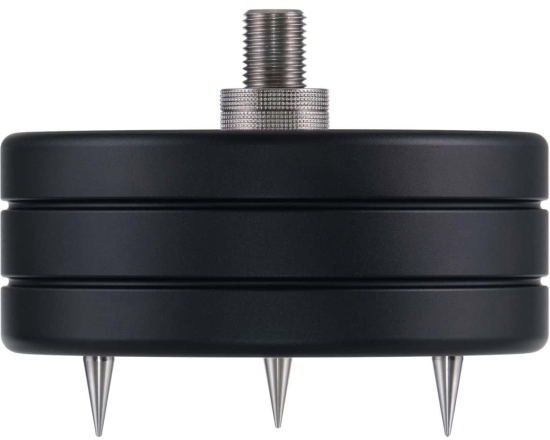
AUVA technology
Vibrations can distort the sound we hear, emphasizing some frequencies over others and masking detail and texture. The AUVA Isolators are designed to hold loudspeakers rigidly while absorbing and dissipating cabinet vibrations before passing them down to the floor. Simultaneously, the products aim to prevent room vibrations from feeding back up into the speakers.
Stack Audio explains that compliant isolators (such as rubber, foam, or springs) can reduce vibration but move and compress, leaving your speakers held less rigid. I can attest to this as I have yet to find a compliant footer that provides clarity and control to my satisfaction.
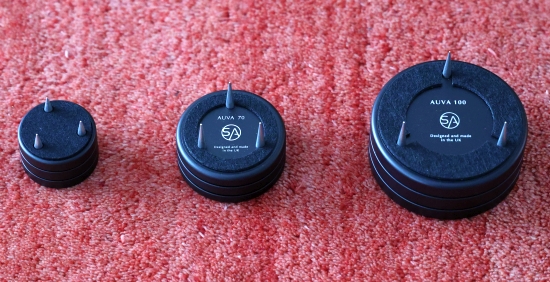
As Stack Audio acknowledges, holding loudspeakers precisely is critical to hearing spatial detail and the clarity and timing of musical notes. These are essential elements that make focused listening a pleasure and hold your attention. This is why it is common to use spikes under loudspeakers, which couple them to the floor. And, sure enough, this statement is again fully on par with my personal experiences.
However, as the company found, there is a problem with spikes alone as they allow vibration to pass right through in both directions – to and from the loudspeakers. The AUVAs work differently: enclosed within the AUVA’s precision machined aluminum cases are cells containing a mixture of particles. Vibrations excite the particles, creating movement and collisions that dissipate the energy virtually instantaneously. Think of it like throwing a ball into soft sand – the sand absorbs the energy from the ball, preventing it from bouncing. According to the maker, this patent-pending technology enables the AUVAs to remove masking vibrations over a wide frequency range, revealing more of the clarity in the musical recording. In essence, by working like a natural extension to the speaker, AUVA loudspeaker isolators are designed to provide the best qualities of both spikes and isolators – without the drawbacks.
The products come complete with detailed instructions, which cover not just the installation but also speaker setup in general and contain a lot of good advice.
System Context
The AUVA isolators will be listened to in the main system in combination with the Magico S1 MkII loudspeakers, powered by a CH Precision L1 preamplifier and CH Precision A1.5 power amp.
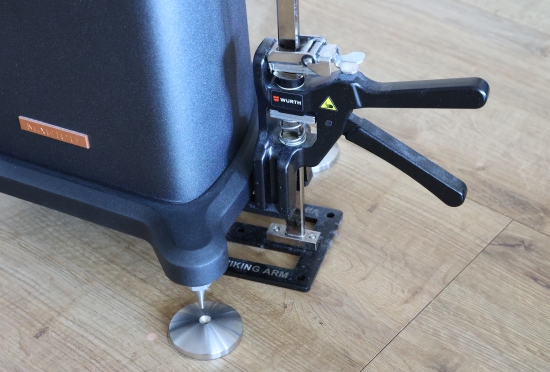
Highly recommended for this job: Wurth Viking Arm. This tool makes swapping footers a breeze, carefully and precisely lifting even very heavy speakers with ease.
My room has a laminate floor (vinyl planking), and I usually use Spikes under all racks and speakers. The AUVAs are fitted with solid floor circular felt pads and can optionally be ordered to include Carpet spikes. As their name implies, these are intended to pierce carpets and provide solid coupling to the hard floor underneath. Given my laminate floor, the AUVAs should be used with their felt pads.
I did entertain the idea of also trying the supplied spikes, but I do not have 24 identical spike discs to facilitate this. A wood plank could be used to protect the floor, but that would induce a different sound than the stainless steel disks I usually use, and the speakers would sit too high, further skewing the comparisons. Finally, I contemplated using the spikes directly on the floor, but obtaining 72 new holes in a single session seemed like a bit much, so I just used the AUVAs with their felt pads, as intended.
Next: Listening and Conclusion

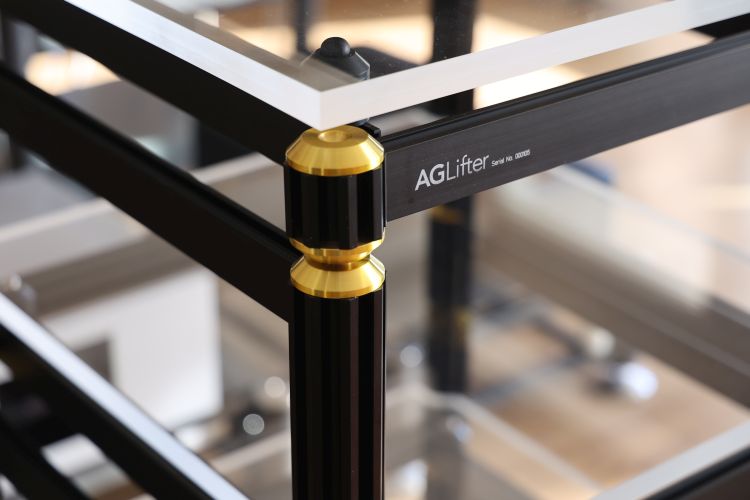
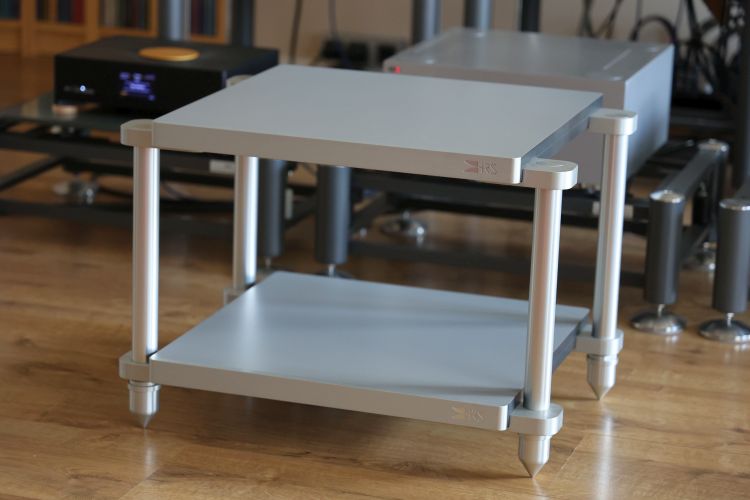
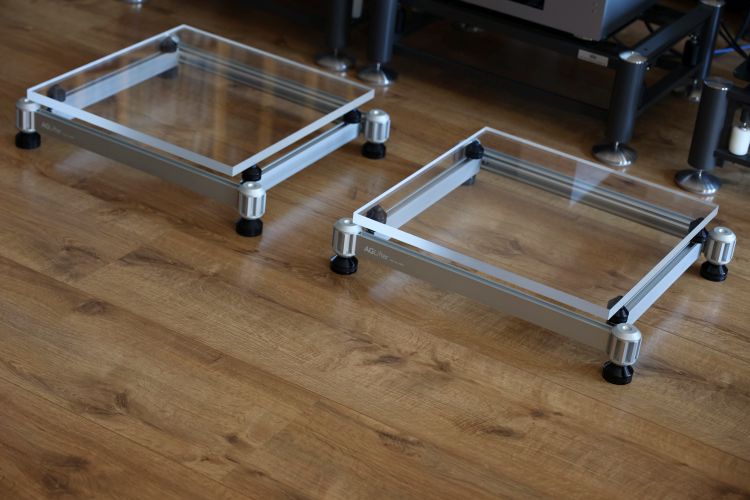
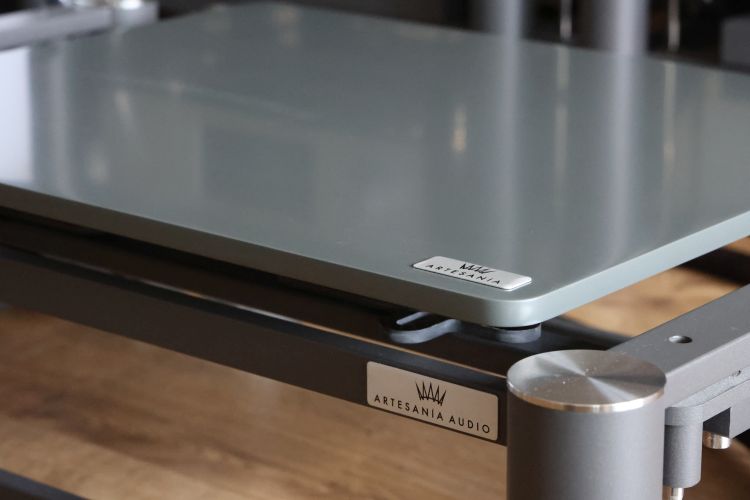
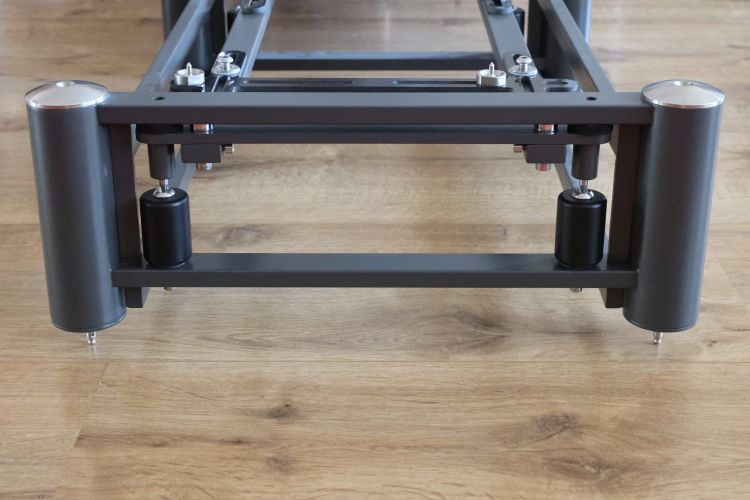
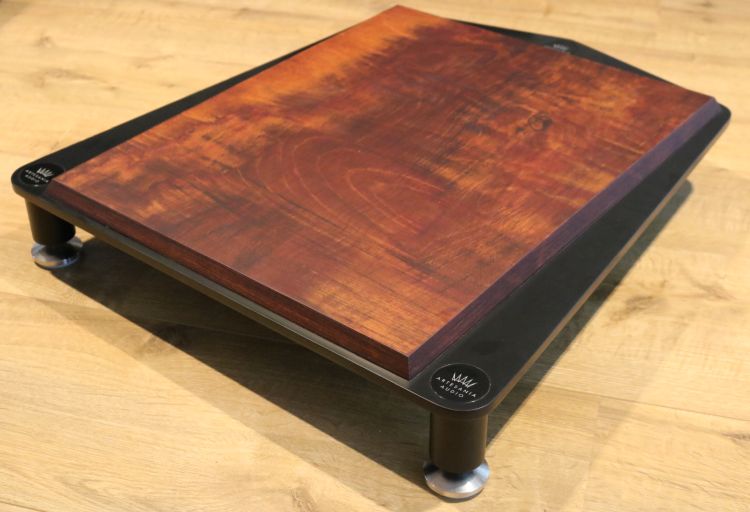
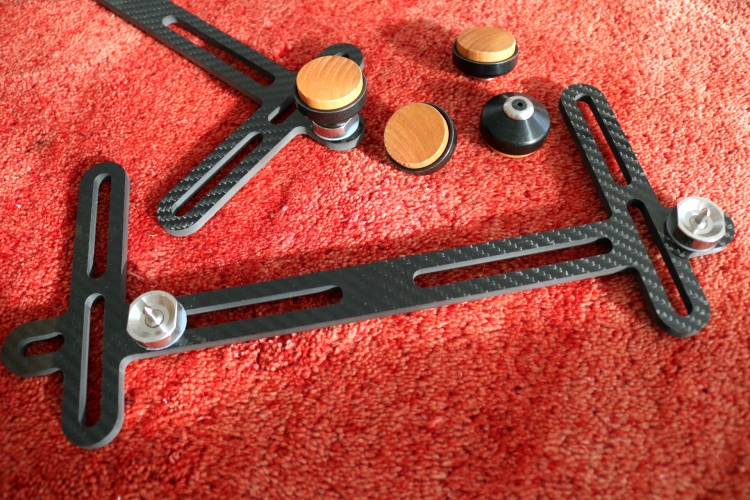
I understand the sound changes a little while the Auvas settle down, so I would have liked your opinion of the small changes you are so apt to explain. I think the 70s also look good on the S1.
Hi Vladimir, I have not specifically paid attention to long-term effects, so alas, I cannot comment on that.
I agree the 70s look best with the S1s.
Your eagerly awaited AUVA Isolator review was most interesting. I’ve been using 12 (6 x 2) AUVA 70s under my Vivid Giya 3 speakers since March and would never go back to the stock footers. After the change from spikes to the AUVAs under your Magicos, you mentioned a slight loss of bass incisiveness along with the reported gains. I moved in the opposite direction, so to speak, from the tiny Vivid composite material footers to the harder, milled aluminum AUVAs. And the initial result was *more* bass incisiveness and clarity, but with a concurrent brighter balance. So much so that I spent days moving the Giyas further apart and nearer the side and front walls in an effort to recover the reduced mid and low bass. The reward was a fine new balance with improved clarity and wonderful bass energy, tone and texture.
This experience just confirms my conviction that you (and Stack Audio) are right; speakers need to be held rigid to perform their best. I suspect speaker isolation that allows movement of the enclosure may solve some of the vibration issues but also introduces factors that ultimately compromise performance. The brilliance of AUVA’s design is it allows particle movement and tiny collisions in the internal cells to absorb the unwanted energy while the foot’s rigid metal chassis holds the speaker enclosure motionless.
Great feedback, Lee! Do you have a wood or concrete floor? I think the floor type (wood or concrete), the top layer (vinyl planking or carpet), and the layer inbetween (foam cell, paper/felt, or other) are also of major influence. And whether or not the AUVA spikes are used. In my case, I could not use them, but I suspect they may have an large impact on the incisiveness.
“Engineered hardwood” (oak veneer) over a thin compliant layer over 25cm of concrete, so perhaps similar to your floor. Using the felt pads of course, not the carpet spikes. And I replaced the M8 steel attachment bolts with Grade 5 titanium bolts just because I couldn’t help myself. The AUVA 70s are well-proportioned in my opinion, but they are taller than the original stock footers and as a result, the Giyas unavoidably ended up 2cm higher off the floor. I’m not sure how much this contributed to the reduction in bass volume, but the gains in resolution and clarity were more than worth the effort required to recover a good tonal balance.
Hey Christian interesting review. I’m wondering considering the large changes the Avuas made, especially in the bass did you mess with speaker positioning at all? Perhaps a different speaker position might have retained that bass intensity but with more incisiveness?
That said I understand how heavy your Magico’s are so I totally understand if you didn’t experiment!
Cheers,
Jon
Hi Jon, While tweaks do indeed more often than not require another tweak to offset a changed balance, I find this is not the case here, as the speakers are already in the optimum positions. They are heavy indeed, but relatively easy to slide around when on spike discs. But from countless experiments done over many years, ideal positions have emerged, and despite trying alternative positions now and then, these have stuck. They are positioned such that the bass is cleanest and fastest, and the room is most evenly loaded, for the flattest possible frequency response. Interestingly, since the completion of the room acoustics projects, I find that these positions also prove ideal for other speakers, the only exception being dipole magnetostatic panel speakers. In short: while I can achieve a fuller bass or a leaner and more forward sound by moving the speakers back or forth respectively, the quality of the bass is already ideal in the current positions. I think if the AUVAs were used with spikes they would be as incisive or maybe even better than the standard spikes.
Hi Christiian
Thank you for the review. Normally you make more comparisons with different component, which I really like since it gives more chances that I can relate to some of the components and it’s relation in a larger context.
Unfortunately this time you only had a pair of speakers and no other types of vibration reducing candidates (I don’t count spikes).
The ideal would be on different types of floor, suspended wood, concreate etc. In practice that would also mean different rooms with non-comparable room acoustics. But it might give a relative perspective on the possible different effects depending on floor construction. I suspect different isolators/vib-eaters are noy equally effective on different floors.
Would be really interesting to compare some different types; springs, elastomers, balls, wires, particles and combinations thereof.
A large task, I understand, but it would be really interesting.
Maybe a few different ones would be doable?
Keep up your writing Christiian.
Hi Per, I always carry out any comparisons I can using the materials and components at hand. In this case, I had only the Magicos to use. I’m sure the type of floor will indeed have a very large impact, and when I am in the position to try the footers somewhere else, I will certainly add an addendum for that.
Excellent article, this is the first direct comparison I’ve seen with each of the AUVA line. I’m curious about adding the 100s to my setup to support my subwoofer (a Rythmik F12SE, an exceptional component comparable in some ways to REL’s T9x, but with an emphasis on bottom end extension going to 14Hz and slightly more authority on a 1 on 1 comparison). Supposing you were to use AUVAs to support a sub, would you personally favor the 70s or 100s?
Hi Roberto, For a moderately heavy sub, I think I would go for the 70. But it would also depend on whether you want to maximize the feeling of control and tightness (70) or maximize the body and oomph (100).